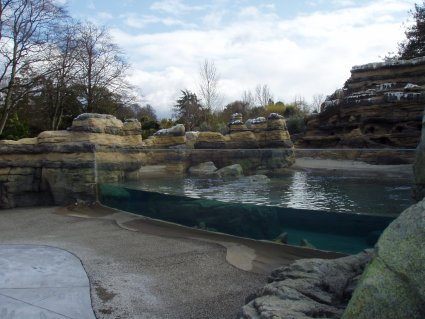
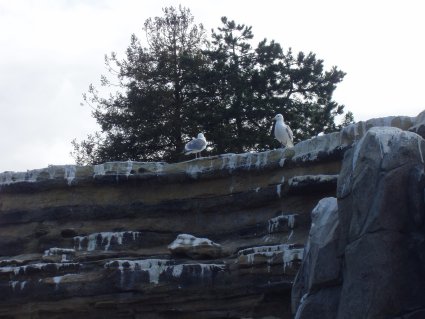
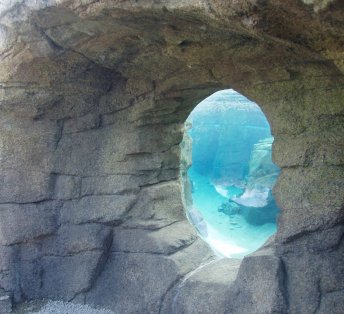
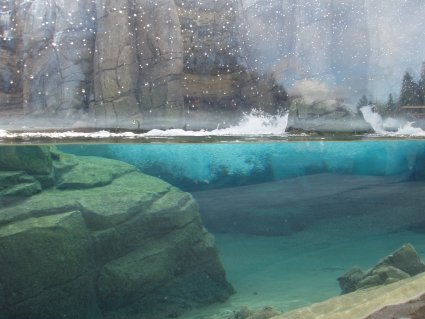
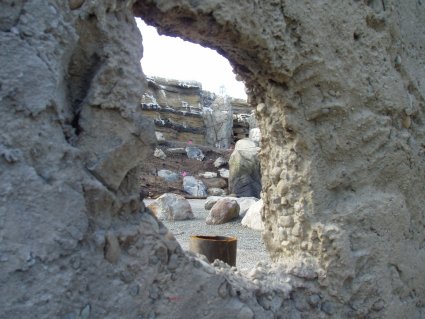
Zoo’s new penguin exhibit almost ready
March 28th, 2009
We got a behind-the-scenes look at the new Humboldt penguin exhibit at Woodland Park Zoo a few days ago. Construction is mostly complete, and they’re finishing up some signage and plantings in anticipation of its public opening May 2. The penguins, brought in from a number of zoos, are in quarantine behind the exhibit, and are slowly being introduced to penguins outside their own groups before jumping into their new home.
The exhibit is modeled after penguin habitat in Punta San Juan, Peru.
Guano (bird excrement) is harvested in Punta San Juan for use as fertilizer. And while it’s good to reuse something like that, the penguins make their nests in piles of guano, so over-harvesting is harming their habitat. So signs around the exhibit, and stacked bags of (fake) guano will teach visitors about the importance of maintaining penguins’ habitat. There’s also a lot of very realistic looking hand-painted “guano” all over the rocks. These seagulls were adding their own authenticity to the exhibit while we were there.
Right in front of the window is a large rock that almost touches the surface of the water. That’s for the penguins to “porpoise” over the top, almost like a slide. Fun for them, fun for us to watch. And there are two very deep portholes that extend into the tank, so kids (or adults) can sit inside them and feel like they’re right in the tank with the birds.
On the north side is where the tide comes rushing into the pool every minute or two.
On the south end, a crumbling old wall with a large hole in it symbolizes the need for newer infrastructure in Punta San Juan to keep predators away from the birds.
The exhibit includes dozens of built-in nesting dens, more than the number of bird pairs that will live there, so they can move around and find the one they like the best. Penguin foot prints are embedded into the ground on the far right, along with bits of nesting material such as seaweed and shells.
The ground outside the tank is pervious concrete, so rain soaks into the ground. The pool is heated by geothermal energy tapped from 300 feet below the earth’s surface (check out KING 5 environmental reporter Gary Chittim’s report on this heating and cooling method).
Kids will be able to climb into a small boat, climb over an old anchor, and possibly get wet if they get too close to a “blow hole” that will periodically spurt water into the air.
Story and images courtesy of Phinneywood@
http://www.phinneywood.com/2009/03/28/zoos-new-penguin-exhibit-almost-ready/


















No comments:
Post a Comment